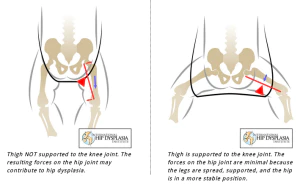Numbers? Colors? Letters?

Parent: “My son has a language delay, he rarely uses words or combines them together, but he knows all letters, numbers and colors! His nursery teacher and doctor said not to worry.”
Speech therapist: “Does your child use different types of words? When does he use them?”
Parent:” But he knows letters. They must be harder than words!”
When did number “3” become more important than an “apple”, “washing”, “happy”?
Day after day, our society emphasizes more and more on academic skills at a very young age before even testing the linguistic readiness of a child. It’s a fast-forward world where children’s brains are getting programmed to learning skills in a super speedy way while skipping very important steps in development. In fact, this is not the parents’ fault. They must be concerned about his schooling, therefore they insisted on teaching him these skills.
Ironically, we tend to forget sometimes that the most important pre-requisite to learn literacy and numeracy is LANGUAGE. How will a child understand what he/she is reading if he/she faces difficulties in understanding spoken words?
Let’s give time to our children to live their age, explore their environment, build new concepts and add words to them to create labels. This step that we often miss helps develop a wide vocabulary with different types of words: nouns, verbs, adjectives, prepositions, pronouns, etc. Then, children will start using their lexicon in different and new contexts everyday with different people which helps them develop the skill of combining words together and soon enough producing full sentences.
How to help your child accomplish that stage?
Play, play and then play again! Let him/her choose the game or toy. Always try to repeat steps of the game to create opportunities for the child to learn new words. Play by turn to provide a language model. Always repeat what the child says and add words to extend his/her utterances.
Create opportunities for the child to request for objects and describe events e.g. put his sock in his hand instead of foot and wait for his/her reaction, pretend to brush your teeth with ketchup, give him/her a closed container of his/her favorite food etc.
Read books: talk about actions, characters, feelings, anticipate what’s going to happen next, describe a past event, re-read books many times etc.
Keep it FUN!
Meet Rana here.
References:
- Jan Pepper and Elaine Weitzman, It Takes Two To Talk (5th edition), (2017), The Hanen Centre, Ontario, Canada.
- Cindy Conklin, Elaine Weitzman, Jan Pepper, Anne McDade & Tamara Stein, Making Hanen Happen ITTT, Leaders Guide for Hanen Certified Speech-Language Pathologists/Therapists, (May 2018), The Hanen Centre, Ontario, Canada.
- Elain Weitzman and Janice Greenberg, ABC and Beyond, Building Emergent Literacy in Early Childhood Settings (1st Edition), 2010, The Hanen Centre, Ontario, Canada.





